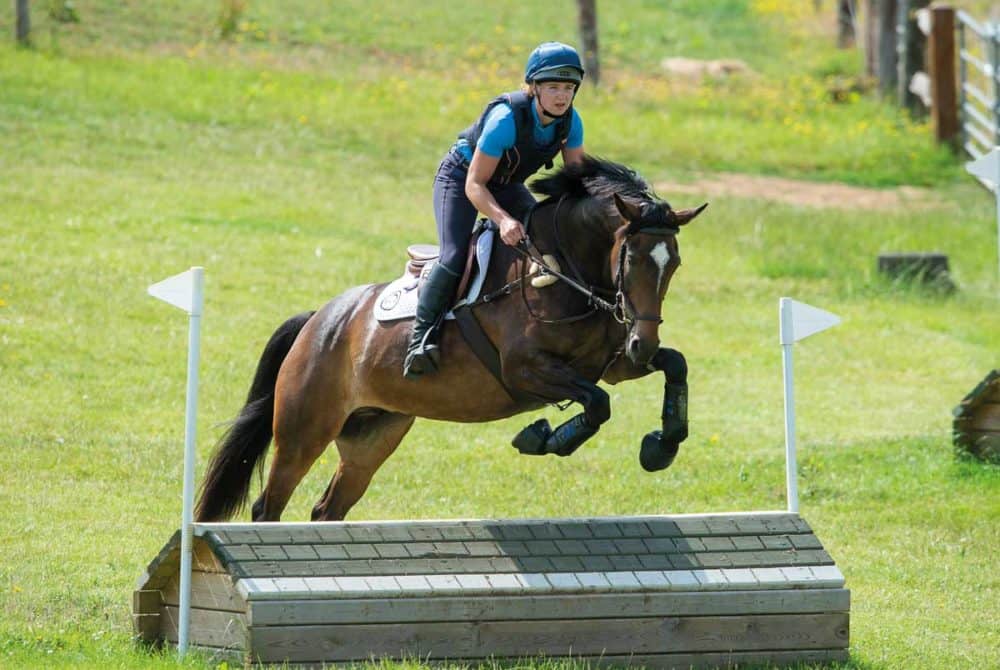Intro to cross-country
Posted 5th December 2019
Looking to dip your toe into eventing but not sure how to start? Hollie Swain guides you through the first steps of cross-country training

When it comes to introducing your horse to cross-country fences, it’s easy to convince yourself that it should feel like second nature to him – especially if he’s been taught to jump over coloured poles within the confines of an arena. After all, when you consider the rolling countryside courses are often set in, as well as the rustic nature of the obstacles, surely it can’t be as daunting as a brightly coloured showjump or filler?
As with all things horsey, it’s best to treat every new experience as exactly that – just because your horse is comfortable jumping one type of fence, it doesn’t mean he’ll be just as happy over something different. And while cross-country fences might be designed with a more natural feel than a showjump, to a horse who’s never seen them before, they’re anything but. So, when the time comes to set foot onto a cross-country course, the key word is confidence.
Warm welcome
The aim of a schooling session is to build your horse’s confidence. With this in mind, remember that there’s no best type of jump to try first, and you’ll need to work with what’s available to you. Try to pick something that looks inviting – a simple rail, rolltop or a fence with a sloping profile works nicely.
The challenge If your horse hasn’t seen a cross-country jump or course, or he’s in completely new surroundings, he’s likely to start off a little distracted. Always try to work with him, rather than creating a potential conflict, and choose something that looks as welcoming as possible.
Tackle it confidently Start in trot, giving your horse a long approach to ensure he has plenty of time to read the question. It can be tricky to stay in balance in canter on undulating ground, so stick to trot for the first few attempts until you’re both more relaxed. You’ll feel much more in control in trot, too, which will make you less likely to hold onto him. Allow him to poke his nose forward, so his neck doesn’t get too short – he needs to be able to clearly see what’s in front of him. This is even more important when you start working with different gradients.
Continue in a straight line after the fence until your horse is in a way of going that you’re happy with, then ask him to halt and praise him. This may feel counter-productive but, especially while you’re building his confidence, it’ll keep him thinking about what you’re asking and stop him from rushing. It’s also a helpful way to teach him that a cross-country course isn’t always somewhere to go flat out, he needs to be able to stop and chill out, too.
Pick up a copy of February Horse&Rider, on sale 12 December, for top advice from eventer Hollie Swain on having a go at cross-country.










